NATURAL RESOURCE MANAGEMENT — PROBLEMS AND SOLUTIONS Lecture

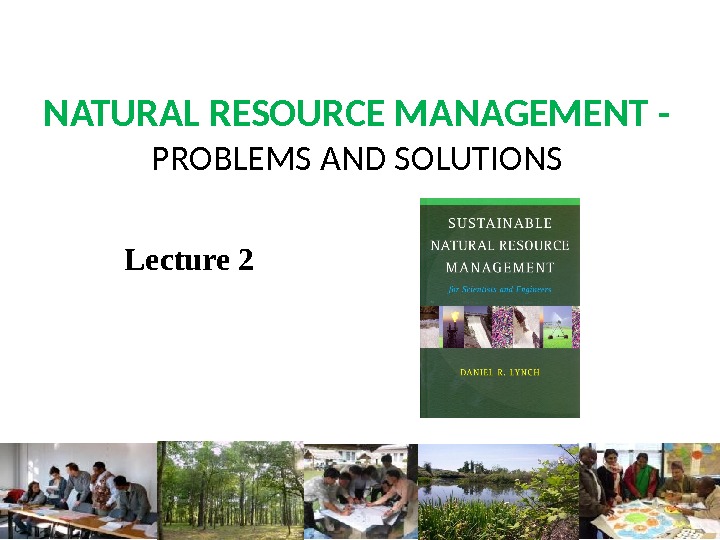


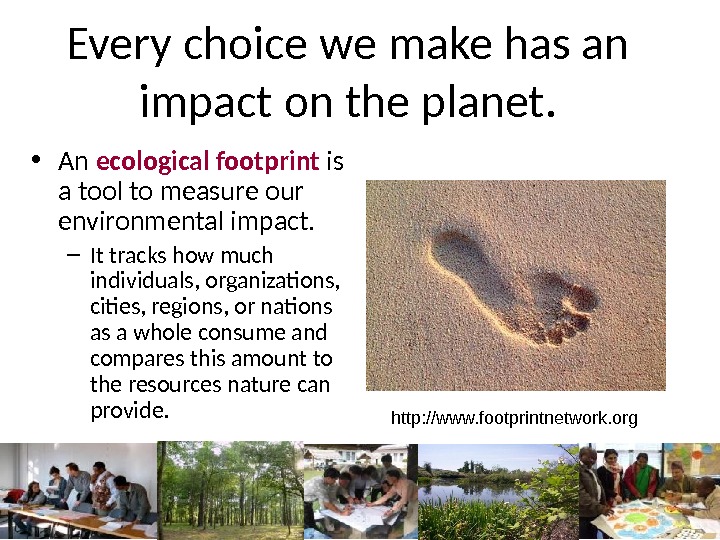

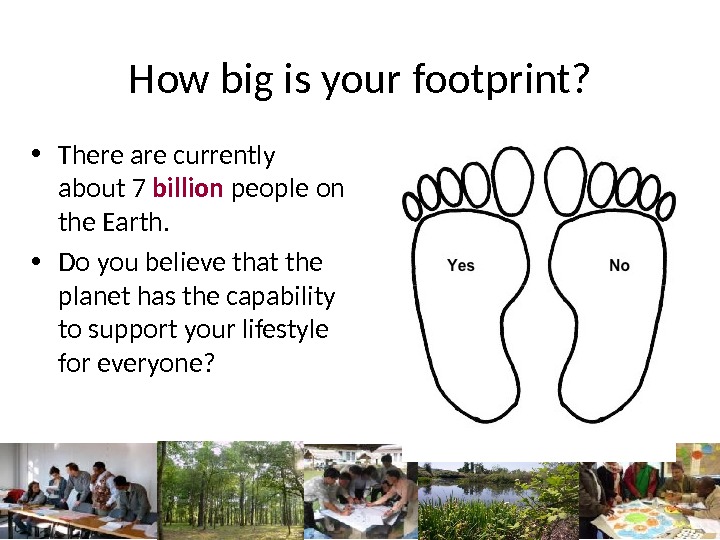

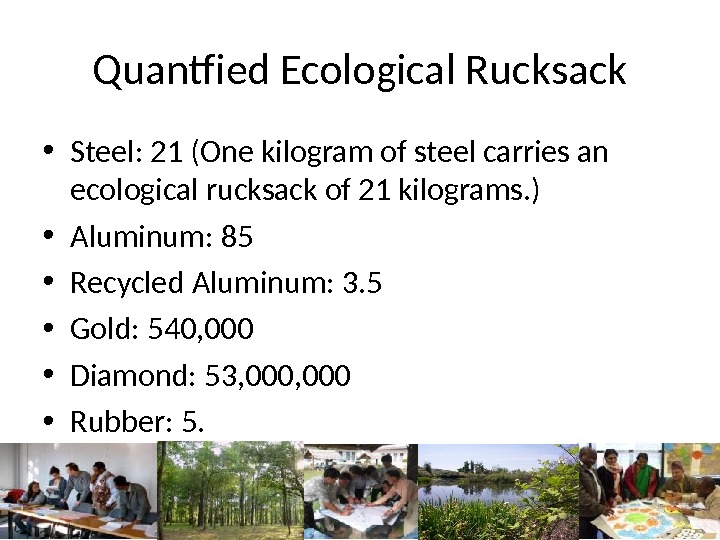

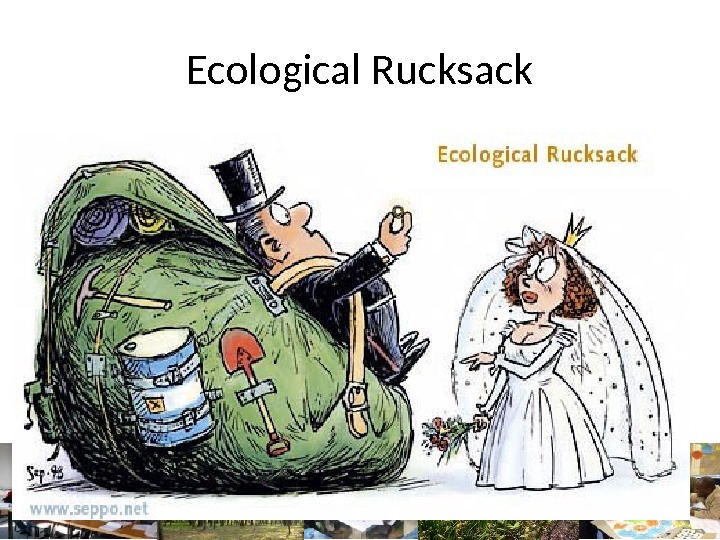


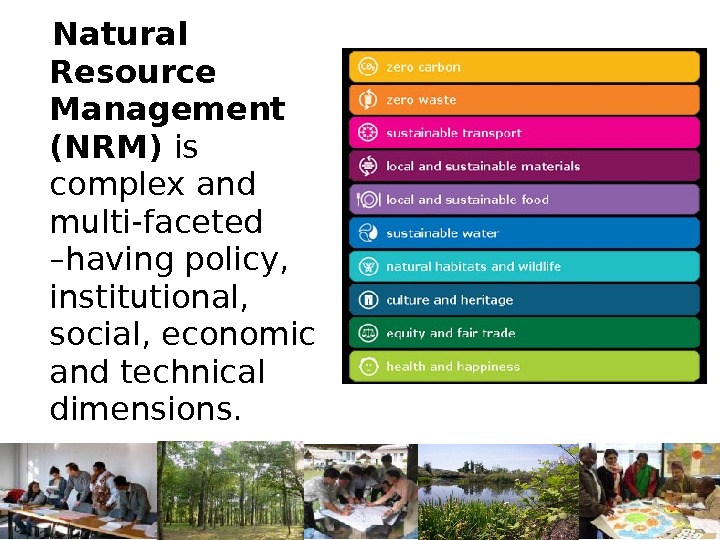


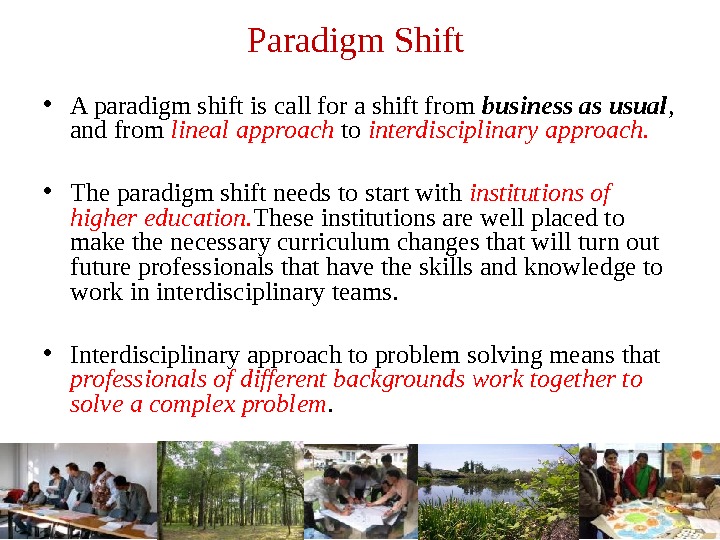

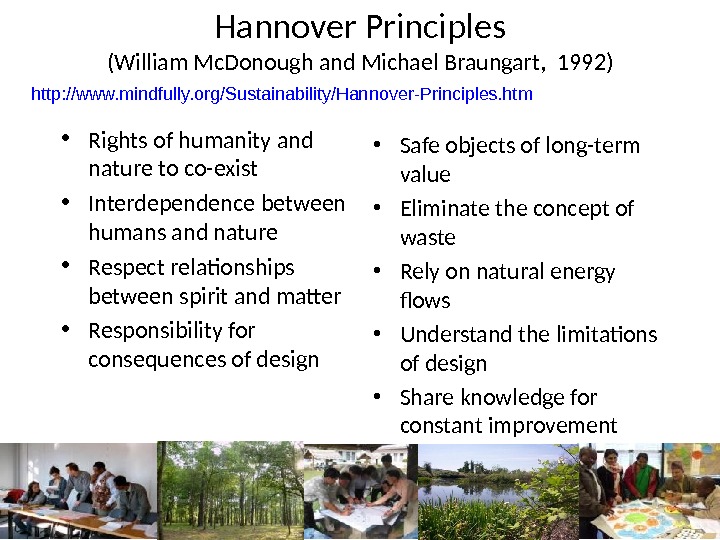


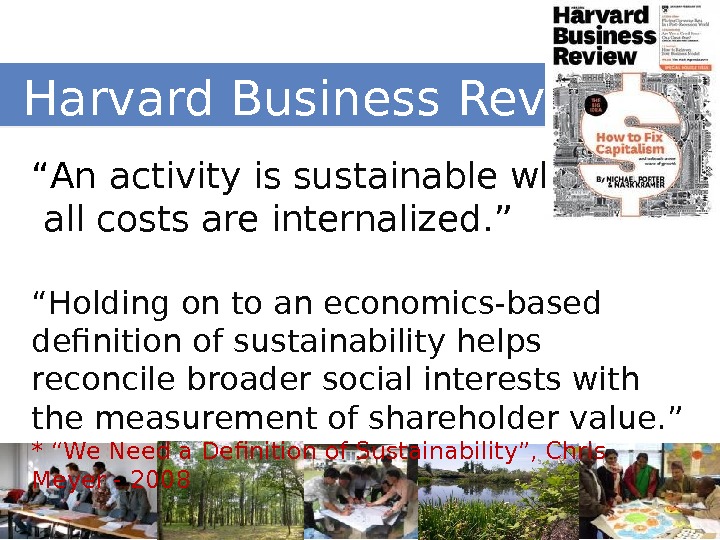




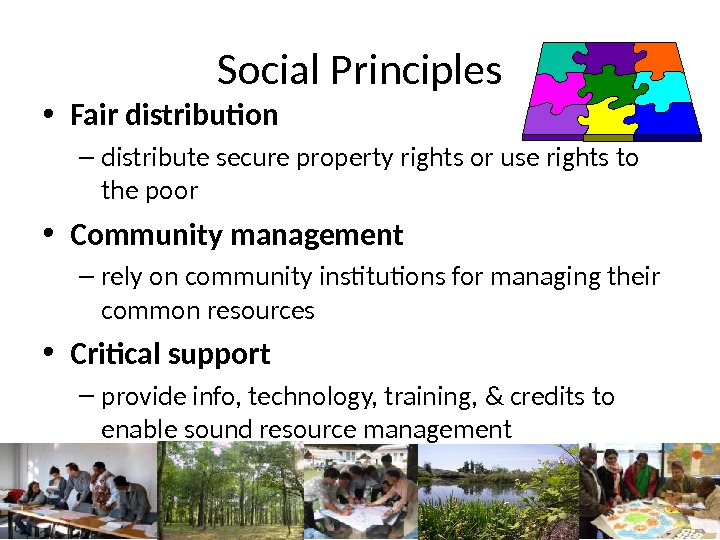

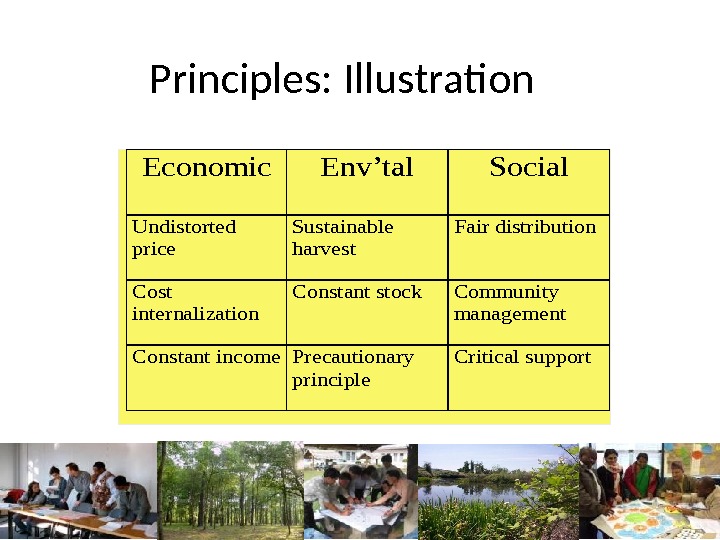


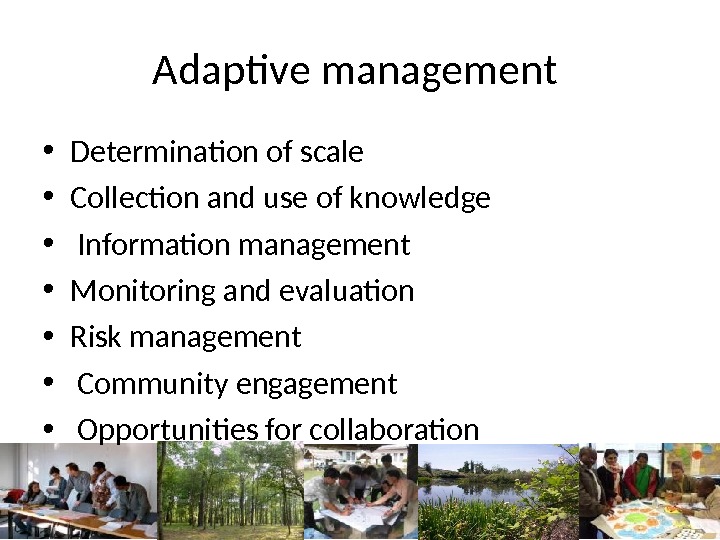



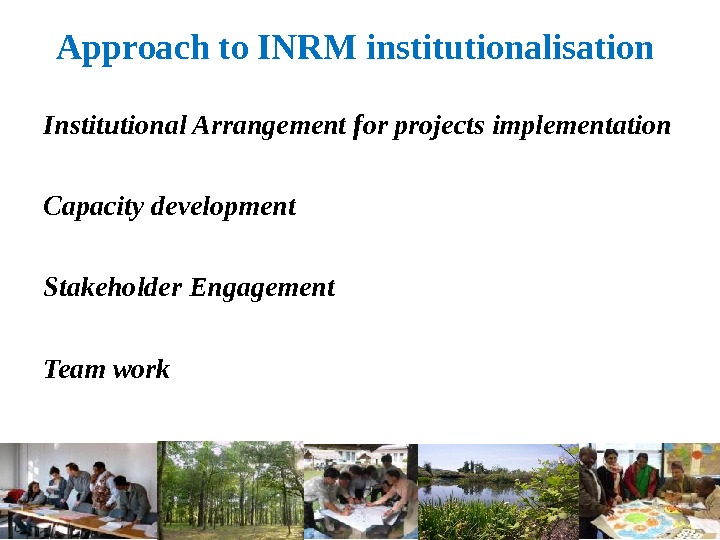

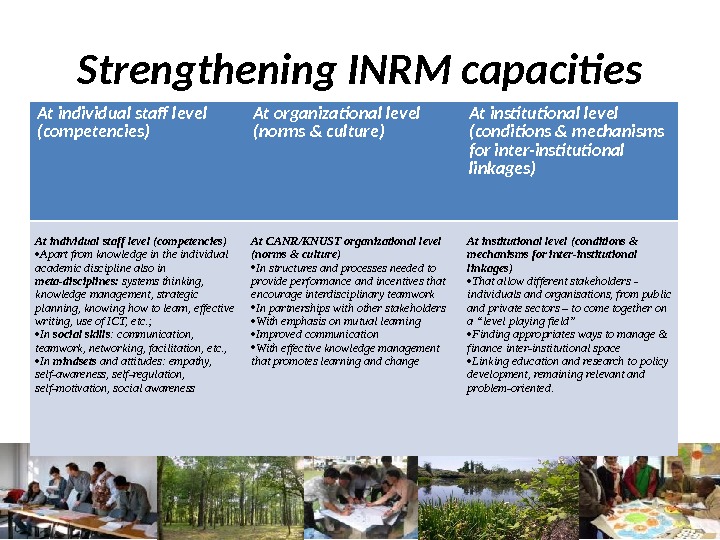

lecture_2_nrm_problems_and_solutions.ppt
- Размер: 3 Mегабайта
- Количество слайдов: 38
Описание презентации NATURAL RESOURCE MANAGEMENT — PROBLEMS AND SOLUTIONS Lecture по слайдам
 NATURAL RESOURCE MANAGEMENT — PROBLEMS AND SOLUTIONS Lecture
NATURAL RESOURCE MANAGEMENT — PROBLEMS AND SOLUTIONS Lecture
 Ecological Footprint
Ecological Footprint
 Ecological Footprint • The Ecological Footprint measures the amount of nature’s resources an individual, a community, or a country consumes in a given year, normalized to a unit of land area, most often hectares • Coined in 1992 by William Rees a professor at the University of British Columbia in Vancouver, Canada
Ecological Footprint • The Ecological Footprint measures the amount of nature’s resources an individual, a community, or a country consumes in a given year, normalized to a unit of land area, most often hectares • Coined in 1992 by William Rees a professor at the University of British Columbia in Vancouver, Canada
 Every choice we make has an impact on the planet. • An ecological footprint is a tool to measure our environmental impact. – It tracks how much individuals, organizations, cities, regions, or nations as a whole consume and compares this amount to the resources nature can provide. http: //www. footprintnetwork. org
Every choice we make has an impact on the planet. • An ecological footprint is a tool to measure our environmental impact. – It tracks how much individuals, organizations, cities, regions, or nations as a whole consume and compares this amount to the resources nature can provide. http: //www. footprintnetwork. org
 Concept of Ecological Footprint The quantity of bioproductive land that is required to support current consumption food, housing, transport, consumer goods, services Includes land needed for absorption of waste Wackernagel and Reese, Our Ecological Footprint
Concept of Ecological Footprint The quantity of bioproductive land that is required to support current consumption food, housing, transport, consumer goods, services Includes land needed for absorption of waste Wackernagel and Reese, Our Ecological Footprint
 How big is your footprint? • There are currently about 7 billion people on the Earth. • Do you believe that the planet has the capability to support your lifestyle for everyone?
How big is your footprint? • There are currently about 7 billion people on the Earth. • Do you believe that the planet has the capability to support your lifestyle for everyone?
 Ecological Rucksack is the total quantity (in kg) of the natural material that is disturbed in its natural setting and thus considered the total input in order to generate a product — counted from the cradle to the point when the product is ready for use — minus the weight (in kg) of the product itself.
Ecological Rucksack is the total quantity (in kg) of the natural material that is disturbed in its natural setting and thus considered the total input in order to generate a product — counted from the cradle to the point when the product is ready for use — minus the weight (in kg) of the product itself.
 Quantfied Ecological Rucksack • Steel: 21 (One kilogram of steel carries an ecological rucksack of 21 kilograms. ) • Aluminum: 85 • Recycled Aluminum: 3. 5 • Gold: 540, 000 • Diamond: 53, 000 • Rubber: 5.
Quantfied Ecological Rucksack • Steel: 21 (One kilogram of steel carries an ecological rucksack of 21 kilograms. ) • Aluminum: 85 • Recycled Aluminum: 3. 5 • Gold: 540, 000 • Diamond: 53, 000 • Rubber: 5.
 Some other ecological rucksacks • Coffee maker — 298 kg • toothbrush about — 1. 5 kg • plastic bucket — 26 kg • silver chain — 20 kg • 12 wine glasses — 6 kg • 5 -gram gold ring — 2000 kg • wooden beads — 0. 5 kg (Simonen 1999)
Some other ecological rucksacks • Coffee maker — 298 kg • toothbrush about — 1. 5 kg • plastic bucket — 26 kg • silver chain — 20 kg • 12 wine glasses — 6 kg • 5 -gram gold ring — 2000 kg • wooden beads — 0. 5 kg (Simonen 1999)
 Ecological Rucksack
Ecological Rucksack
 Resource productivity: more from less • More benefit out of less material and energy • More welfare with less environmental damage • Unsustainable level of natural resource consumption • Carrying capacity of nature exceeded already • Total material consumption steadily growing • Consumption distributed unequally – increasing poverty problems – increasing social problems Source: Wuppertal. Institute
Resource productivity: more from less • More benefit out of less material and energy • More welfare with less environmental damage • Unsustainable level of natural resource consumption • Carrying capacity of nature exceeded already • Total material consumption steadily growing • Consumption distributed unequally – increasing poverty problems – increasing social problems Source: Wuppertal. Institute

 Natural Resource Management (NRM) is complex and multi-faceted –having policy, institutional, social, economic and technical dimensions.
Natural Resource Management (NRM) is complex and multi-faceted –having policy, institutional, social, economic and technical dimensions.
 Different reactions to dynamic change within NRM : existing management practices and technologies, policies and institutional arrangements may no longer be sufficient; power relations, benefit distribution, and interests may no longer be in balance ecological functions may be disrupted risks may exceed management capacity economic forces may outstrip conservation forces; cultural heritage associated with management practices as well as ownership patterns, may no longer be operating.
Different reactions to dynamic change within NRM : existing management practices and technologies, policies and institutional arrangements may no longer be sufficient; power relations, benefit distribution, and interests may no longer be in balance ecological functions may be disrupted risks may exceed management capacity economic forces may outstrip conservation forces; cultural heritage associated with management practices as well as ownership patterns, may no longer be operating.
 Shifts in Development Paradigms Economic cum Cultural Progress 1920’s – 1940’s Economic Progress 1940’s – 1960’s Economic Progress cum Rural Development 1950’s – 1970’s Integrated Area Development 1970’s Participatory Development 1980’s Sustainable Development 1990’s-2000’s Exploitation of natural resources Industrialization as vehicle of econ devt Recognition of disparity in income Agri-production and geographic equity Reversal of TOP–DOWN approach
Shifts in Development Paradigms Economic cum Cultural Progress 1920’s – 1940’s Economic Progress 1940’s – 1960’s Economic Progress cum Rural Development 1950’s – 1970’s Integrated Area Development 1970’s Participatory Development 1980’s Sustainable Development 1990’s-2000’s Exploitation of natural resources Industrialization as vehicle of econ devt Recognition of disparity in income Agri-production and geographic equity Reversal of TOP–DOWN approach
 Paradigm Shift • A paradigm shift is call for a shift from business as usual , and from lineal approach to interdisciplinary approach. • The paradigm shift needs to start with institutions of higher education. These institutions are well placed to make the necessary curriculum changes that will turn out future professionals that have the skills and knowledge to work in interdisciplinary teams. • Interdisciplinary approach to problem solving means that professionals of different backgrounds work together to solve a complex problem.
Paradigm Shift • A paradigm shift is call for a shift from business as usual , and from lineal approach to interdisciplinary approach. • The paradigm shift needs to start with institutions of higher education. These institutions are well placed to make the necessary curriculum changes that will turn out future professionals that have the skills and knowledge to work in interdisciplinary teams. • Interdisciplinary approach to problem solving means that professionals of different backgrounds work together to solve a complex problem.
 Ceres Principles 1989 • Protection of the biosphere • Sustainable use of natural resources • Reduction and disposal of wastes • Energy conservation • Risk reduction • Safe products and services • Environmental restoration • Informing the public • Management commitment • Audits and reportsa 10 -point code of corporate environmental ideals to be publicly endorsed by companies as an environmental mission statement or ethic
Ceres Principles 1989 • Protection of the biosphere • Sustainable use of natural resources • Reduction and disposal of wastes • Energy conservation • Risk reduction • Safe products and services • Environmental restoration • Informing the public • Management commitment • Audits and reportsa 10 -point code of corporate environmental ideals to be publicly endorsed by companies as an environmental mission statement or ethic
 Hannover Principles ( William Mc. Donough and Michael Braungart , 1992 ) • Rights of humanity and nature to co-exist • Interdependence between humans and nature • Respect relationships between spirit and matter • Responsibility for consequences of design • Safe objects of long-term value • Eliminate the concept of waste • Rely on natural energy flows • Understand the limitations of design • Share knowledge for constant improvementhttp: //www. mindfully. org/Sustainability/Hannover-Principles. htm
Hannover Principles ( William Mc. Donough and Michael Braungart , 1992 ) • Rights of humanity and nature to co-exist • Interdependence between humans and nature • Respect relationships between spirit and matter • Responsibility for consequences of design • Safe objects of long-term value • Eliminate the concept of waste • Rely on natural energy flows • Understand the limitations of design • Share knowledge for constant improvementhttp: //www. mindfully. org/Sustainability/Hannover-Principles. htm
 Objective of Natural Resource Management Sustainable Use: Use of natural resources in ways that ensure a non-declining stream of benefits for all, without weakening ecological functions of the resources.
Objective of Natural Resource Management Sustainable Use: Use of natural resources in ways that ensure a non-declining stream of benefits for all, without weakening ecological functions of the resources.
 Economic Principles • Undistorted price – remove government subsidies for resource use • Cost internalization – resource users pay for external effects • Constant income – estimate & invest user costs to maintain income-generating capacity of the resource Full-cost pricing is the essence of economic principles
Economic Principles • Undistorted price – remove government subsidies for resource use • Cost internalization – resource users pay for external effects • Constant income – estimate & invest user costs to maintain income-generating capacity of the resource Full-cost pricing is the essence of economic principles
 Harvard Business Review* “ An activity is sustainable when all costs are internalized. ” “ Holding on to an economics-based definition of sustainability helps reconcile broader social interests with the measurement of shareholder value. ” * “We Need a Definition of Sustainability”, Chris Meyer —
Harvard Business Review* “ An activity is sustainable when all costs are internalized. ” “ Holding on to an economics-based definition of sustainability helps reconcile broader social interests with the measurement of shareholder value. ” * “We Need a Definition of Sustainability”, Chris Meyer —
 A system is sustainable when it does not generate the symptoms of unsustainability. The most important chart in the world…
A system is sustainable when it does not generate the symptoms of unsustainability. The most important chart in the world…
 Sustainability Optimum Efficiency 100% 0% Resilience Source: Lietaer, Ulanowicz, Goerner 2008 Natural Systems Definition: Balance of Efficiency and Resiliency Collapse of Financial System
Sustainability Optimum Efficiency 100% 0% Resilience Source: Lietaer, Ulanowicz, Goerner 2008 Natural Systems Definition: Balance of Efficiency and Resiliency Collapse of Financial System

 Environmental Principles • Sustainable harvest – do not mine renewable resources • Constant stock – increase renewable resources to make up for loss of non-renewable resources • Precautionary principle – safeguard ecological functions in the face of uncertainty
Environmental Principles • Sustainable harvest – do not mine renewable resources • Constant stock – increase renewable resources to make up for loss of non-renewable resources • Precautionary principle – safeguard ecological functions in the face of uncertainty
 Social Principles • Fair distribution – distribute secure property rights or use rights to the poor • Community management – rely on community institutions for managing their common resources • Critical support – provide info, technology, training, & credits to enable sound resource management
Social Principles • Fair distribution – distribute secure property rights or use rights to the poor • Community management – rely on community institutions for managing their common resources • Critical support – provide info, technology, training, & credits to enable sound resource management

 Principles: Illustration. Economic. Env’tal. Social Undistorted price Sustainable harvest Fair distribution Cost internalization Constant stock. Community management Constant income. Precautionary principle Critical support
Principles: Illustration. Economic. Env’tal. Social Undistorted price Sustainable harvest Fair distribution Cost internalization Constant stock. Community management Constant income. Precautionary principle Critical support
 Institutional Implications • What institutional arrangements are required to: – implement full-cost pricing? – ensure sustainable harvest? – prevent irreversibility? – redistribute rights over use of resources – make community resource mgt effective? • What are the difficulties?
Institutional Implications • What institutional arrangements are required to: – implement full-cost pricing? – ensure sustainable harvest? – prevent irreversibility? – redistribute rights over use of resources – make community resource mgt effective? • What are the difficulties?
 Approaches applied to natural resource management • Top-down or Command control • Bottom-Up (regional or community based NRM) • Adaptive management • Precautionary approach • Integrated approach (INRM)
Approaches applied to natural resource management • Top-down or Command control • Bottom-Up (regional or community based NRM) • Adaptive management • Precautionary approach • Integrated approach (INRM)
 Adaptive management • Determination of scale • Collection and use of knowledge • Information management • Monitoring and evaluation • Risk management • Community engagement • Opportunities for collaboration
Adaptive management • Determination of scale • Collection and use of knowledge • Information management • Monitoring and evaluation • Risk management • Community engagement • Opportunities for collaboration
 Definitions of Integrated Natural Resource Management • INRM is defined as an approach that integrates research on different types of natural resources into stakeholder-driven processes of adaptive management and innovation to improve livelihoods, agro-ecosystem resilience, agricultural productivity and environmental services at community, eco-regional and global scales of intervention and impact ’ ( Hawkins et al 2009 ). • Sayer and Campbell (2004) defines INMR as a systems approach and a process-orientated approach that leads to measurable impacts and outcomes; work at multiple scales with multiple stakeholders; address issues of tradeoffs; employ new tools and methods; be amenable to scaling up and out. . ”
Definitions of Integrated Natural Resource Management • INRM is defined as an approach that integrates research on different types of natural resources into stakeholder-driven processes of adaptive management and innovation to improve livelihoods, agro-ecosystem resilience, agricultural productivity and environmental services at community, eco-regional and global scales of intervention and impact ’ ( Hawkins et al 2009 ). • Sayer and Campbell (2004) defines INMR as a systems approach and a process-orientated approach that leads to measurable impacts and outcomes; work at multiple scales with multiple stakeholders; address issues of tradeoffs; employ new tools and methods; be amenable to scaling up and out. . ”
 INRM Efficiency The efficiency of INRM in dealing with these problems comes from its ability to: i. empower relevant stakeholders ii. resolve conflicting interests of stakeholders iii. foster adaptive management capacity iv. focus on key causal elements (and thereby deal with complexity) v. integrate levels of analysis vi. merge disciplinary perspectives vii. make use of a wide range of available technologies viii. guide research on component technologies ix. generate policy, technological and institutional alternatives
INRM Efficiency The efficiency of INRM in dealing with these problems comes from its ability to: i. empower relevant stakeholders ii. resolve conflicting interests of stakeholders iii. foster adaptive management capacity iv. focus on key causal elements (and thereby deal with complexity) v. integrate levels of analysis vi. merge disciplinary perspectives vii. make use of a wide range of available technologies viii. guide research on component technologies ix. generate policy, technological and institutional alternatives
 Principles of INRM • . • INRM integrates the perspectives, knowledge and actions of different stakeholders around a common theme. The theme or ‘entry point’ represents a research and development ‘challenge’, identified by one or more stakeholders who recognize that a broader working alliance is needed to achieve the desired development impact. • INRM integrates the learning that stakeholders achieve through working together. Beyond simply a concerted action process, INRM is a social learning process, with stakeholders learning from the experience of working together. • INRM integrates analysis, action and change across the different (environmental, social and economic) ‘dimensions’ of development.
Principles of INRM • . • INRM integrates the perspectives, knowledge and actions of different stakeholders around a common theme. The theme or ‘entry point’ represents a research and development ‘challenge’, identified by one or more stakeholders who recognize that a broader working alliance is needed to achieve the desired development impact. • INRM integrates the learning that stakeholders achieve through working together. Beyond simply a concerted action process, INRM is a social learning process, with stakeholders learning from the experience of working together. • INRM integrates analysis, action and change across the different (environmental, social and economic) ‘dimensions’ of development.
 Approach to INRM institutionalisation Institutional Arrangement for projects implementation Capacity development Stakeholder Engagement Team work
Approach to INRM institutionalisation Institutional Arrangement for projects implementation Capacity development Stakeholder Engagement Team work
 Implementing INRM principles Education External stakeholders engaged in curricula development / design and teaching Room for experiential learning by doing (rather than being taught) Focusing on problem solving capacities (rather than on just acquiring knowledge) Room to apply real world issues in a professional context (rather than on classroom case studies or artificial/ academic field work situations) Room for inter-disciplinary curriculum development and teaching within and between faculties Collective learning (rather than individual) Research Joint research with stakeholders Room for inter-disciplinary research within and between faculties Problem-oriented research co-identified/co-researched and (partly) paid for by external stakeholders Research more linked to policy processes with long-term strategic engagement Link research to teaching around real life cases More consistency and complementarities in research programmes Experimentation with other research models such as action research Service to the community Clear strategic orientation on intended impact and service delivery (whose problem will be solved? ) Consistency in programme to translate new knowledge (research result) in societal impact Long-term R&D assignments in support of change processes in society Quality checks in place by engagement of independent bodies
Implementing INRM principles Education External stakeholders engaged in curricula development / design and teaching Room for experiential learning by doing (rather than being taught) Focusing on problem solving capacities (rather than on just acquiring knowledge) Room to apply real world issues in a professional context (rather than on classroom case studies or artificial/ academic field work situations) Room for inter-disciplinary curriculum development and teaching within and between faculties Collective learning (rather than individual) Research Joint research with stakeholders Room for inter-disciplinary research within and between faculties Problem-oriented research co-identified/co-researched and (partly) paid for by external stakeholders Research more linked to policy processes with long-term strategic engagement Link research to teaching around real life cases More consistency and complementarities in research programmes Experimentation with other research models such as action research Service to the community Clear strategic orientation on intended impact and service delivery (whose problem will be solved? ) Consistency in programme to translate new knowledge (research result) in societal impact Long-term R&D assignments in support of change processes in society Quality checks in place by engagement of independent bodies
 Strengthening INRM capacities At individual staff level (competencies) At organizational level (norms & culture) At institutional level (conditions & mechanisms for inter-institutional linkages) At individual staff level (competencies) Apart from knowledge in the individual academic discipline also in meta-disciplines: systems thinking, knowledge management, strategic planning, knowing how to learn, effective writing, use of ICT, etc. ; In social skills : communication, teamwork, networking, facilitation, etc. , In mindsets and attitudes: empathy, self-awareness, self-regulation, self-motivation, social awareness At CANR/KNUST organizational level (norms & culture) In structures and processes needed to provide performance and incentives that encourage interdisciplinary teamwork In partnerships with other stakeholders With emphasis on mutual learning Improved communication With effective knowledge management that promotes learning and change At institutional level (conditions & mechanisms for inter-institutional linkages) That allow different stakeholders — individuals and organisations, from public and private sectors – to come together on a “level playing field” Finding appropriates ways to manage & finance inter-institutional space Linking education and research to policy development, remaining relevant and problem-oriented.
Strengthening INRM capacities At individual staff level (competencies) At organizational level (norms & culture) At institutional level (conditions & mechanisms for inter-institutional linkages) At individual staff level (competencies) Apart from knowledge in the individual academic discipline also in meta-disciplines: systems thinking, knowledge management, strategic planning, knowing how to learn, effective writing, use of ICT, etc. ; In social skills : communication, teamwork, networking, facilitation, etc. , In mindsets and attitudes: empathy, self-awareness, self-regulation, self-motivation, social awareness At CANR/KNUST organizational level (norms & culture) In structures and processes needed to provide performance and incentives that encourage interdisciplinary teamwork In partnerships with other stakeholders With emphasis on mutual learning Improved communication With effective knowledge management that promotes learning and change At institutional level (conditions & mechanisms for inter-institutional linkages) That allow different stakeholders — individuals and organisations, from public and private sectors – to come together on a “level playing field” Finding appropriates ways to manage & finance inter-institutional space Linking education and research to policy development, remaining relevant and problem-oriented.


